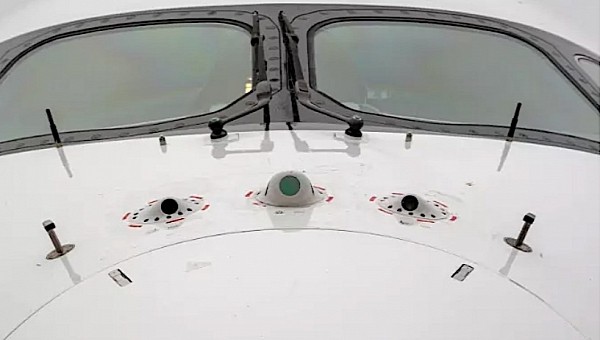Insects are disgusting creatures and most of them have little immediate use to us humans. But that doesn’t mean we can’t learn something from some of them from time to time, and apply those learnings in various fields, including aviation.
For some reason, European aerospace company Airbus turned to dragonflies to learn a thing or two about what it takes to perform intelligent flight. That’s because this insect is much more adept at flying in a coordinated manner compared to say the chaotic regular flies or mosquitos (maybe it’s because of the dragonfly's 360-degree vision), but they also seem to have the ability to remember and recognize landmarks.
So excited is Airbus by this little bug and what it can do that it even named a new aircraft technology suite currently being tested after it. It’s spelled DragonFly, and it’s put together by Airbus offshoot UpNext as a means to increase safety.
DragonFly comprises several autonomous technologies for both on-ground and in-flight operations. The suite includes automated emergency diversion in cruise and automatic landing and taxi assistance, but also allows aircraft to identify features in the landscape to be able to safely navigate in its environment.
To do that, it takes into account not only data that is available to planes currently flying, but also flight zones, terrain and weather conditions. After looking at all that, it can generate a new flight trajectory plan and tell Air Traffic Control (ATC) and the airline Operations Control Centre all about it.
Airbus announced this week DragonFly is entering the final testing stages, and over the next three months it will be put through its paces. Testing has already begun, with an A350-1000 serving as a platform.
The maneuvers performed so far proved DragonFly is capable of managing cruising and landing on its own in a scenario when a crew member becomes incapacitated. When it detects such a situation, the system immediately heads to the nearest airport.
Once on the ground, it can provide the crew with audio alerts when it detects obstacles (and there have been several runway incidents of this nature these past few years), assisted speed control, and guidance to the runway based on a dedicated airport map (just watch National Geographic’s Air Crash Investigation and you’ll immediately know why this is needed).
While continuing to test DragonFly for the next few months, UpNext is already looking ahead at its next project, which involves the creation of the “next generation of computer vision-based algorithms to advance landing and taxi assistance.”
At the time of writing, we have no indication on when the DragonFly system could be implemented in commercial aircraft, or whether it will be available for other makes of flying machines.
So excited is Airbus by this little bug and what it can do that it even named a new aircraft technology suite currently being tested after it. It’s spelled DragonFly, and it’s put together by Airbus offshoot UpNext as a means to increase safety.
DragonFly comprises several autonomous technologies for both on-ground and in-flight operations. The suite includes automated emergency diversion in cruise and automatic landing and taxi assistance, but also allows aircraft to identify features in the landscape to be able to safely navigate in its environment.
To do that, it takes into account not only data that is available to planes currently flying, but also flight zones, terrain and weather conditions. After looking at all that, it can generate a new flight trajectory plan and tell Air Traffic Control (ATC) and the airline Operations Control Centre all about it.
Airbus announced this week DragonFly is entering the final testing stages, and over the next three months it will be put through its paces. Testing has already begun, with an A350-1000 serving as a platform.
The maneuvers performed so far proved DragonFly is capable of managing cruising and landing on its own in a scenario when a crew member becomes incapacitated. When it detects such a situation, the system immediately heads to the nearest airport.
Once on the ground, it can provide the crew with audio alerts when it detects obstacles (and there have been several runway incidents of this nature these past few years), assisted speed control, and guidance to the runway based on a dedicated airport map (just watch National Geographic’s Air Crash Investigation and you’ll immediately know why this is needed).
While continuing to test DragonFly for the next few months, UpNext is already looking ahead at its next project, which involves the creation of the “next generation of computer vision-based algorithms to advance landing and taxi assistance.”
At the time of writing, we have no indication on when the DragonFly system could be implemented in commercial aircraft, or whether it will be available for other makes of flying machines.






